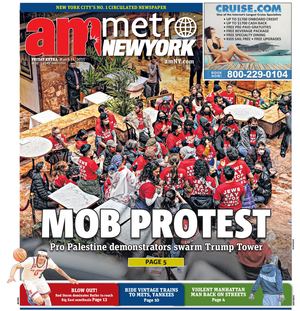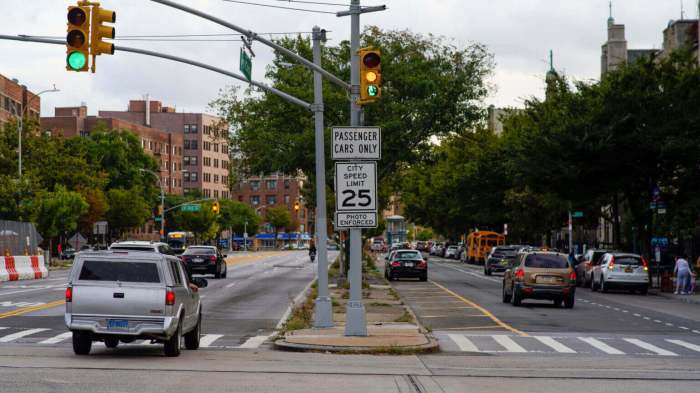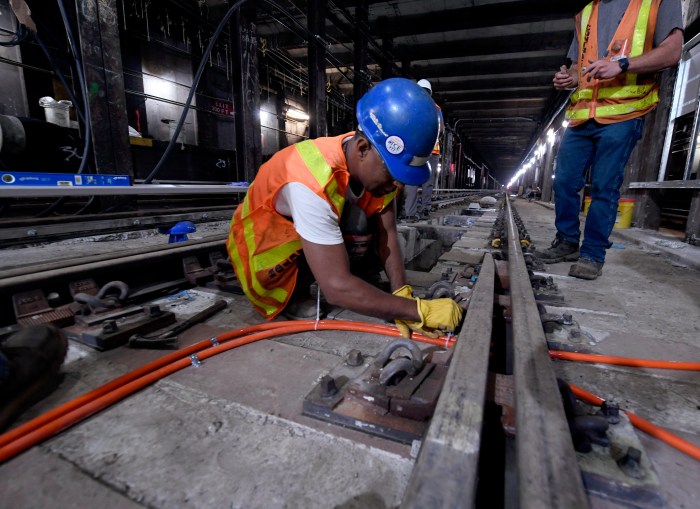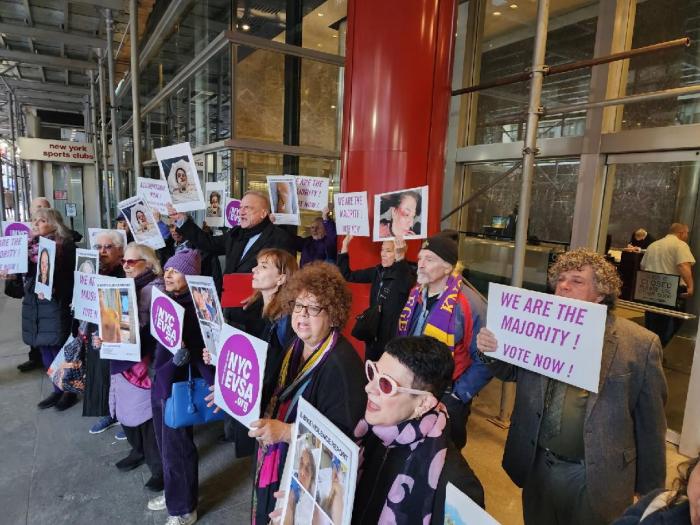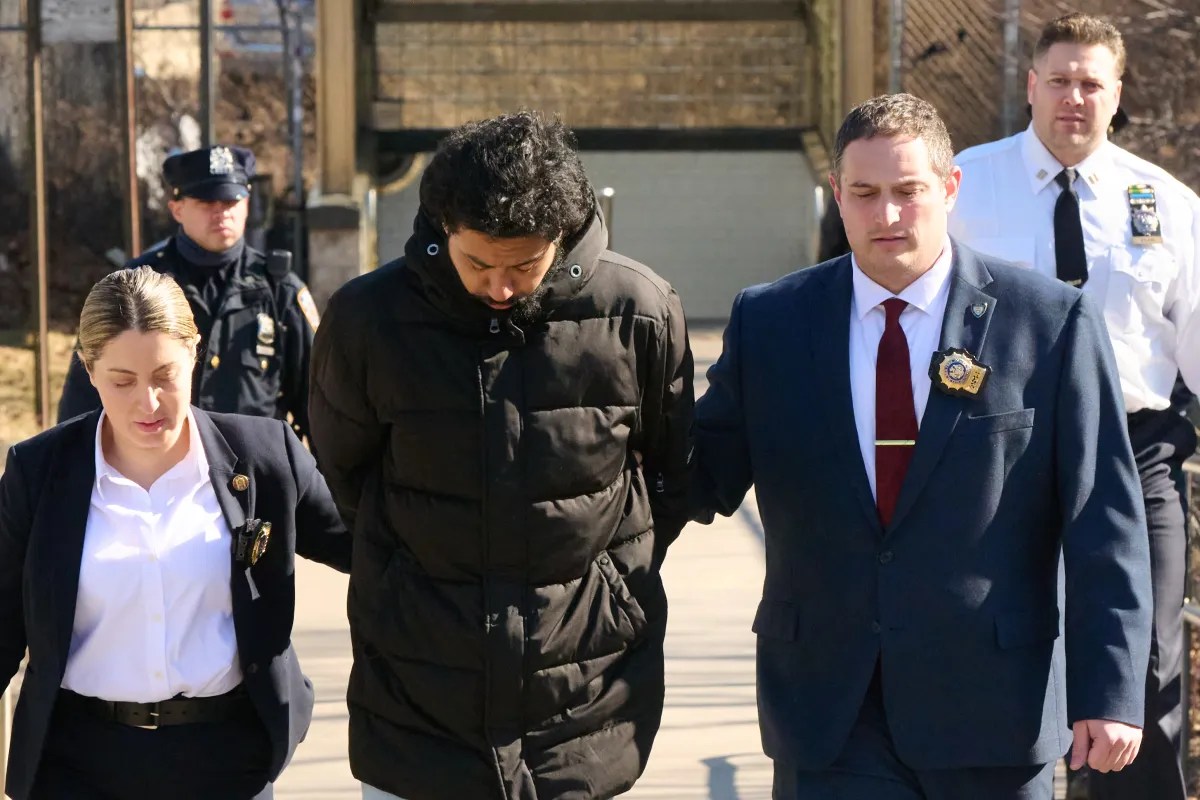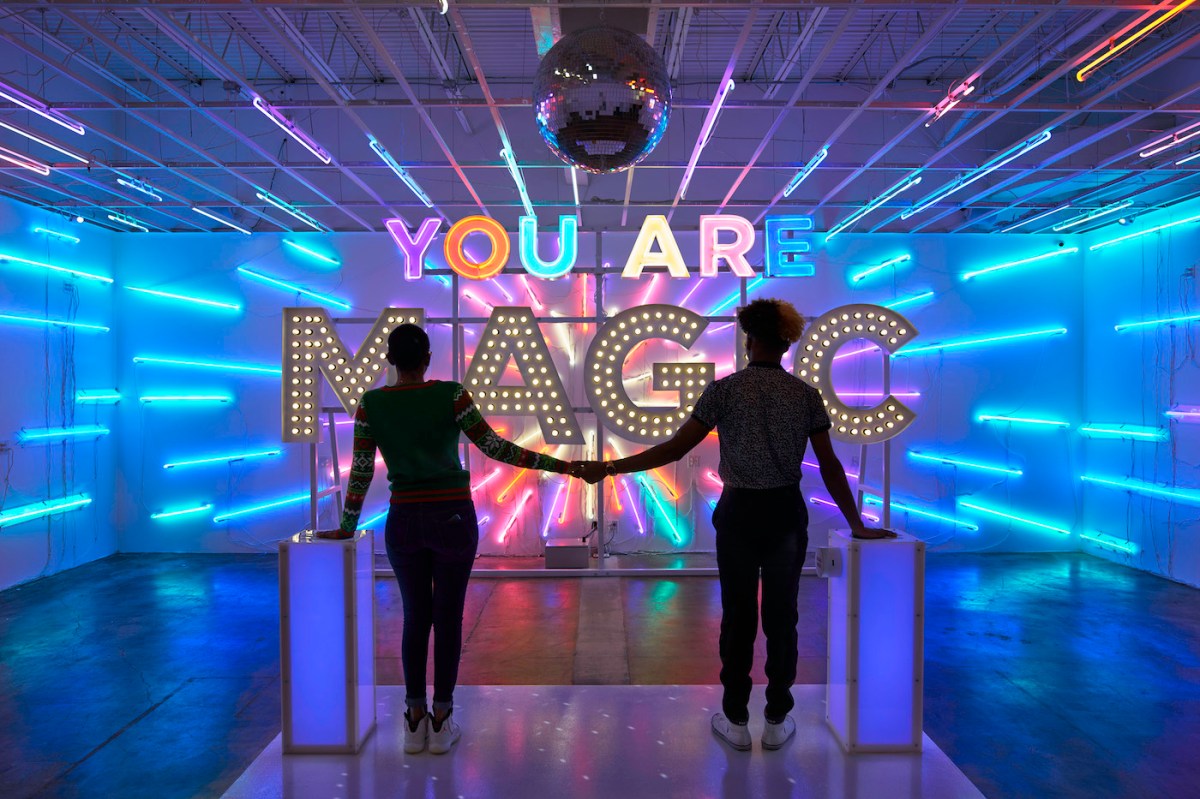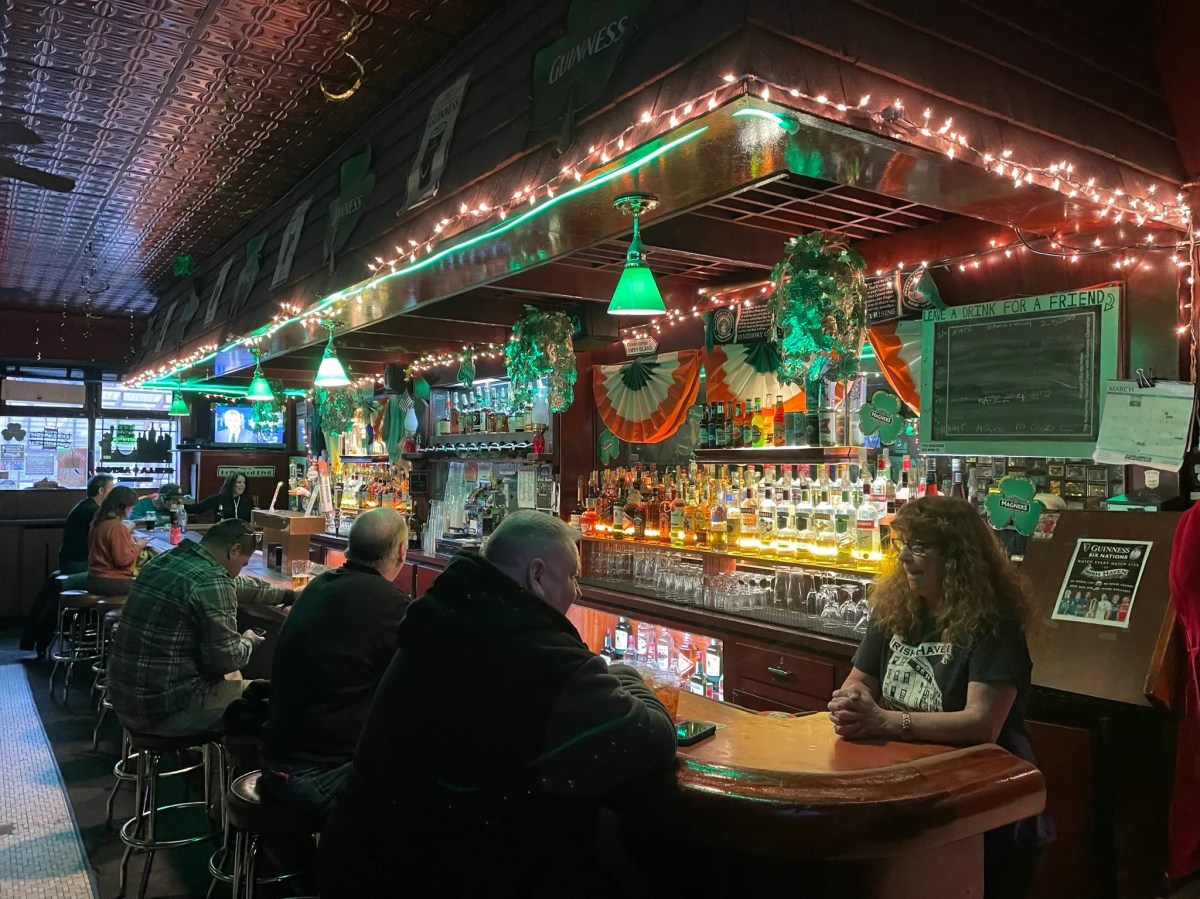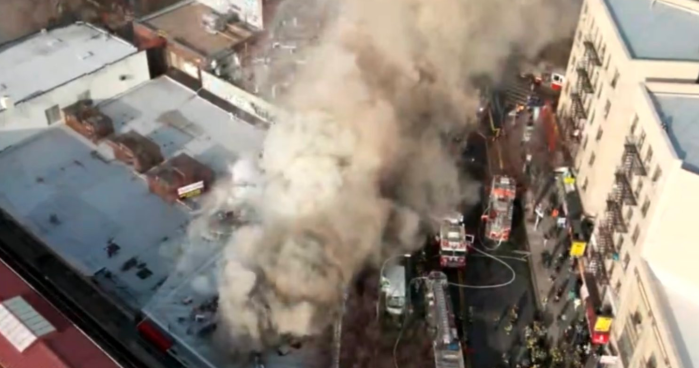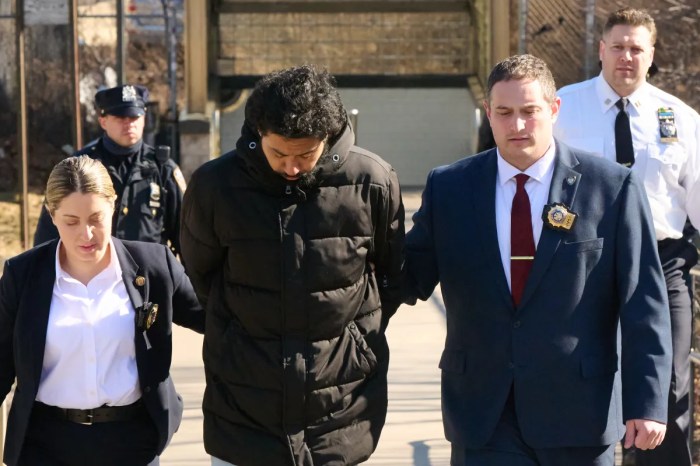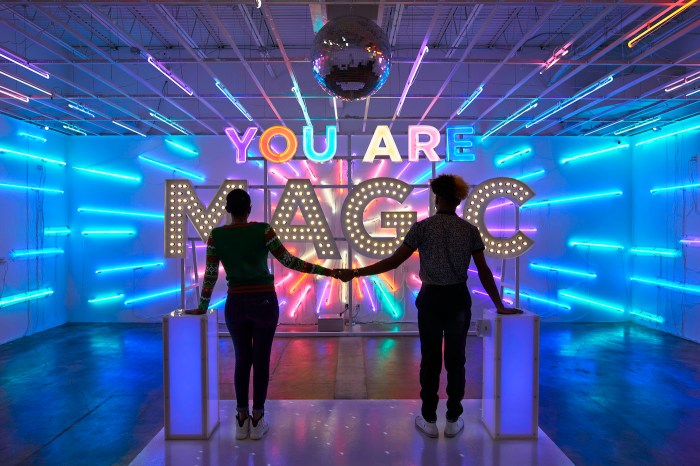If riders see something, they’re encouraged to say something. Now, apps that let passengers know when a train is suddenly delayed are listening to those riders.
A batch of apps submitted to the MTA and AT&T’s third App Quest competition, which received 43 submissions, come with crowdsourcing and social media functions to pull in the wisdom of the riding public. The winners of the cash prizes will be announced Thursday at Grand Central Terminal.
“New York is a very fast-changing environment, especially with the MTA,” said Alex Perlyuk, the developer of My Trans.it NYC. “Users see those changes first.”
Tapping into riders’ real-time experience is made possible through the MTA’s effort to wire all 277 underground stations by 2018. Now, stations around Manhattan and in all of Queens are wired.
“Things like crowdsourcing work when you have a critical mass of people who are connected and engaging and in a position to participate,” said Rachel Haot, the state’s chief digital officer and an App Quest judge.
The MTA frequently pushes alerts and service changes out on social media, particularly Twitter. But the information provided by these apps offers key details on various lines that go beyond what the MTA offers.For instance, a passenger can post about a track fire, instead of “FDNY activity,” or about a station with heavily crowded platforms, though the line’s has a “good service” status.
“You just get a little bit more transparency,” said Josh Crandall, who created Clever Commute for those traveling in and out of the city. “NJ Transit is not going to say Penn Station is a crowded mess tonight.”
Rudin Center for Transportation’s Sarah Kaufman, who authored a report on social media and transit agencies, said the MTA can benefit from riders tweeting and Instagramming the hiccups and commuting headaches.
“They can absorb rider tweets or cell phone trails to help paint the bigger picture for a delay situation, and in the longer term, help tune routes and schedules,” she said. These are some of the apps up for awards Thursday:
MyTrans.it NYC
Subway
Android
The MTA gets a stream of invective on Twitter from riders each day. That can be useful to other passengers with MyTrans.it NYC, which pulls in Tweets about a rider’s station or line. It also allows users to pick from a variety of subway issues to Tweet out about their station and train — everything from manspreading and buskers to mechanical problems and delays.
Clever Commute
Metro-North, LIRR, NJT, PATH
iOS, Android
This app crowdsourced even before it was an app. Joshua Crandall, an NJTransit rider, started Clever Commute as an email for the suburban living set. As an app, Clever Commute sends time-stamped, line-specific alerts from its users that complement what transit agencies provide, while giving riders a platform to send their own alerts.
NYC Metro
Subway, bus, LIRR, Metro-North, NJT, PATH
iOS
NYC Metro from Mark Novak strips crowdsourcing of subway and bus stops down to basic elements — Not Running, Normal, Packed and Avoid — and color codes the stations accordingly. That way, someone could see if it’s worth squeezing onto the Bedford Avenue L train platform on a Saturday night versus taking a cab.
NYC Accessible
Subway
web app at NYCAccessible.com; iOS, Android version coming soon
NYC Accessible gives critical information disabled riders need to get around — where the accessible stations are, updates on elevators and escalators that are down. This app, developed by Andy Glass and recreation therapist Jason Schwab, provides a platform for the disabled community to send feedback to the MTA and tips to fellow riders; the team is developing a way to send the info back out to passengers. “The disabled community in New York City is very unique,” Glass said. “They are the only people that really understand the challenges that they are facing using the MTA.”
